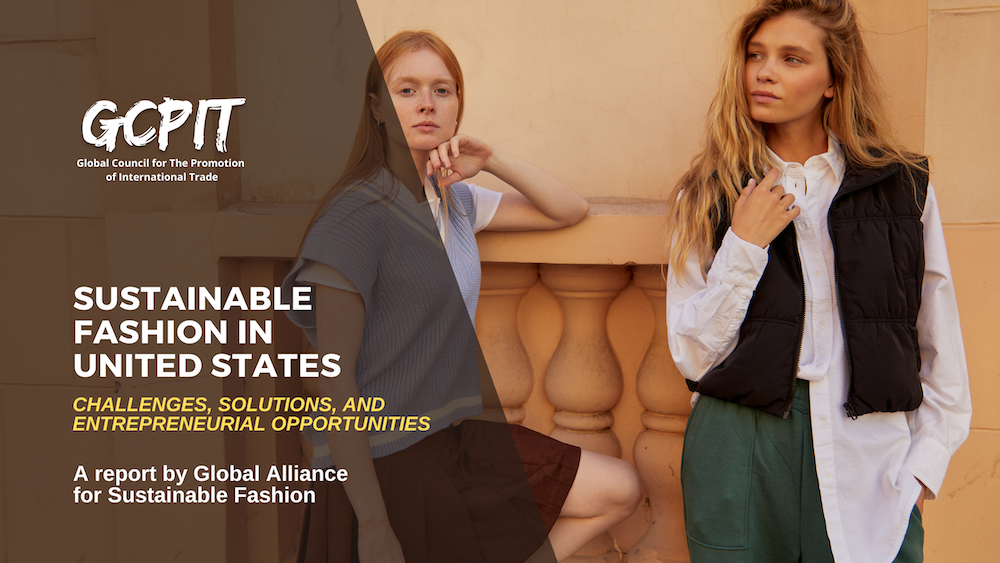Remain Ahead of the Contour by Exploring Ingenious Style Trends
In a sector as dynamic as style, remaining in advance entails even more than simply adhering to current patterns-- it demands an exploration of development. The convergence of technology and fashion declares a brand-new period of customer involvement.

Embracing Smart Textiles
In recent times, the garment industry has seen a transformative shift with the integration of smart textiles, a sophisticated advancement that blends technology with fabric. This advancement stands for not just a fusion of aesthetics and functionality yet additionally a significant leap towards sustainability and customization in vogue. Smart fabrics, likewise understood as e-textiles, installed innovative electronics such as sensors and conductive strings within the fabric, making it possible for garments to connect with the wearer or the environment.
These fabrics are made to monitor physiological parameters, such as heart rate or body temperature, giving real-time health analytics. Beyond health and wellness applications, wise textiles are likewise being utilized for adaptive clothes, which can transform shade or pattern in response to environmental stimulations, therefore providing a dynamic style experience.
Additionally, the growth of energy-harvesting fabrics that produce power from activity or sunlight is leading the way for self-dependent wearable innovation. This development is attracting environmentally mindful customers and designers intending to reduce the environmental footprint of fashion. As r & d in this area advance, smart fabrics are expected to end up being progressively prevalent, reshaping the landscape of modern-day fashion with their multifunctional capacities.
The Increase of 3D Printing
Changing the manufacturing landscape, 3D printing has actually arised as a game-changer in the fashion industry. This advanced technology has actually made it possible for developers to press the borders of imagination, generating complex and tailored garments that were previously unthinkable. By leveraging digital layout and additive manufacturing, 3D printing facilitates the creation of complex geometries and patterns, permitting designers to try out brand-new appearances and structures.
A significant advantage of 3D printing in vogue is its ability to generate on-demand, lessening waste and minimizing stock needs. This performance not just maximizes production processes yet likewise enables for fast prototyping, allowing developers to bring their visions to life in a shorter timeframe. Furthermore, 3D printing supports customization to a degree unparalleled by conventional methods, providing individualized fits and special styles tailored to individual customer choices.
The surge of 3D printing has actually likewise democratized fashion, making it obtainable to emerging developers that can now fabricate high-grade items without significant financial investment in typical production infrastructure. As modern technology continues to advancement, the garment industry is positioned to harness the complete potential of 3D printing, discovering new materials and strategies that will unquestionably redefine exactly how style is conceived and generated.
Sustainable Fashion Innovations
As the apparel industry comes to grips with journalism need for environmental duty, lasting style developments have arised at the forefront of transformative change. The expanding awareness of ecological impact has actually sustained a shift towards more eco-conscious practices and products. Developers and brands are currently prioritizing sustainability, integrating techniques that decrease waste and lower carbon impacts.
One substantial growth is the surge of round style, which highlights recycling and upcycling to prolong the lifecycle of garments. This additional hints approach not only minimizes waste however additionally encourages consumers to embrace an extra conscious approach to clothes usage. Furthermore, using lasting products, such as organic cotton, hemp, and recycled polyester, has actually gained grip. These products call for much less water and power during manufacturing, dramatically decreasing ecological influence.
Another development hinges on the fostering of innovative dyeing techniques that utilize natural dyes or waterless processes, thus reducing the huge amounts of water and chemicals commonly utilized in fabric dyeing. Additionally, advancements in biotechnology have actually brought about the creation of lab-grown natural leather and textiles, providing environmentally pleasant and cruelty-free options to conventional products. With these introducing initiatives, the fashion sector is making significant strides in the direction of a much more sustainable future.

Tech-Integrated Clothing
Tech-integrated clothing represents an innovative fusion of style and modern technology, reshaping just how people interact with their garments. This cutting-edge domain name is noted by the addition of wise textiles and embedded electronic components, improving both performance and visual allure. From physical fitness trackers installed in sportswear to warmed jackets regulated via mobile phone apps, tech-integrated apparel offers customers unprecedented benefit and flexibility.
Introducing brands are driving this trend, concentrating on creating garments that reply to environmental stimulations or individual commands. For circumstances, some garments can transform shade or pattern in reaction to temperature changes, while others incorporate biometric sensing units to check health and wellness metrics like heart rate or tension degrees. The smooth assimilation of modern technology into fabrics additionally extends to environmental sustainability, with efforts to develop self-cleaning textiles or garments that get used to climate condition, therefore reducing the demand for several layers.
In addition, the development of wearable modern technology is not this article simply restricted to apparel yet includes devices like watches and eyewear, further widening the range of tech-integrated style. As the industry continues to innovate, the potential for customization and personalization in apparel grows, supplying consumers distinct, tech-enhanced fashion experiences that cater to their individual needs and choices.
Future of Virtual Fashion
In the last few years, the future of virtual fashion has actually become a transformative force within the sector, leveraging innovations in digital innovation to redefine exactly how style is created, experienced, and consumed. By integrating augmented truth (AR), virtual reality (VIRTUAL REALITY), and 3D style devices, designers can now craft interactive and immersive experiences that go beyond traditional style borders. Digital fashion permits the development of garments that exist only in electronic atmospheres, providing unlimited possibilities for technology without the constraints of physical production.
This digital change not just presents chances for imaginative expression but also addresses sustainability issues fundamental in typical style techniques. Cape Town Sustainable Fashion. By getting rid of the need for physical sources, virtual fashion reduces waste and reduces carbon impacts. In addition, the surge of online fashion aligns with the increasing customer demand for one-of-a-kind and personalized experiences, as virtual garments can be customized and customized to private choices effortlessly

Conclusion
The fashion business's future depend on the integration of cutting-edge innovations and sustainable techniques - Cape Town Sustainable Fashion. Smart fabrics and tech-integrated apparel are enhancing functionality, while 3D printing uses opportunities for personalization and waste decrease. Lasting style, via circular approaches and environmentally friendly materials, shows a dedication to environmental stewardship. In addition, virtual fashion is positioned to redefine customer communications. Adjusting to these trends is important for brands seeking to remain relevant and affordable in this rapidly developing landscape.
In recent years, the fashion industry has seen a transformative shift useful link with the integration of clever textiles, an advanced development that mixes modern technology with material.As the fashion market grapples with the pushing requirement for ecological obligation, lasting style technologies have actually emerged at the leading edge of transformative modification.In recent years, the future of digital fashion has actually arised as a transformative pressure within the sector, leveraging advancements in electronic innovation to redefine just how style is developed, experienced, and eaten. The surge of online fashion straightens with the boosting customer demand for individualized and unique experiences, as digital garments can be customized and tailored to specific choices with ease.
The fashion sector's future lies in the assimilation of lasting methods and cutting-edge technologies.